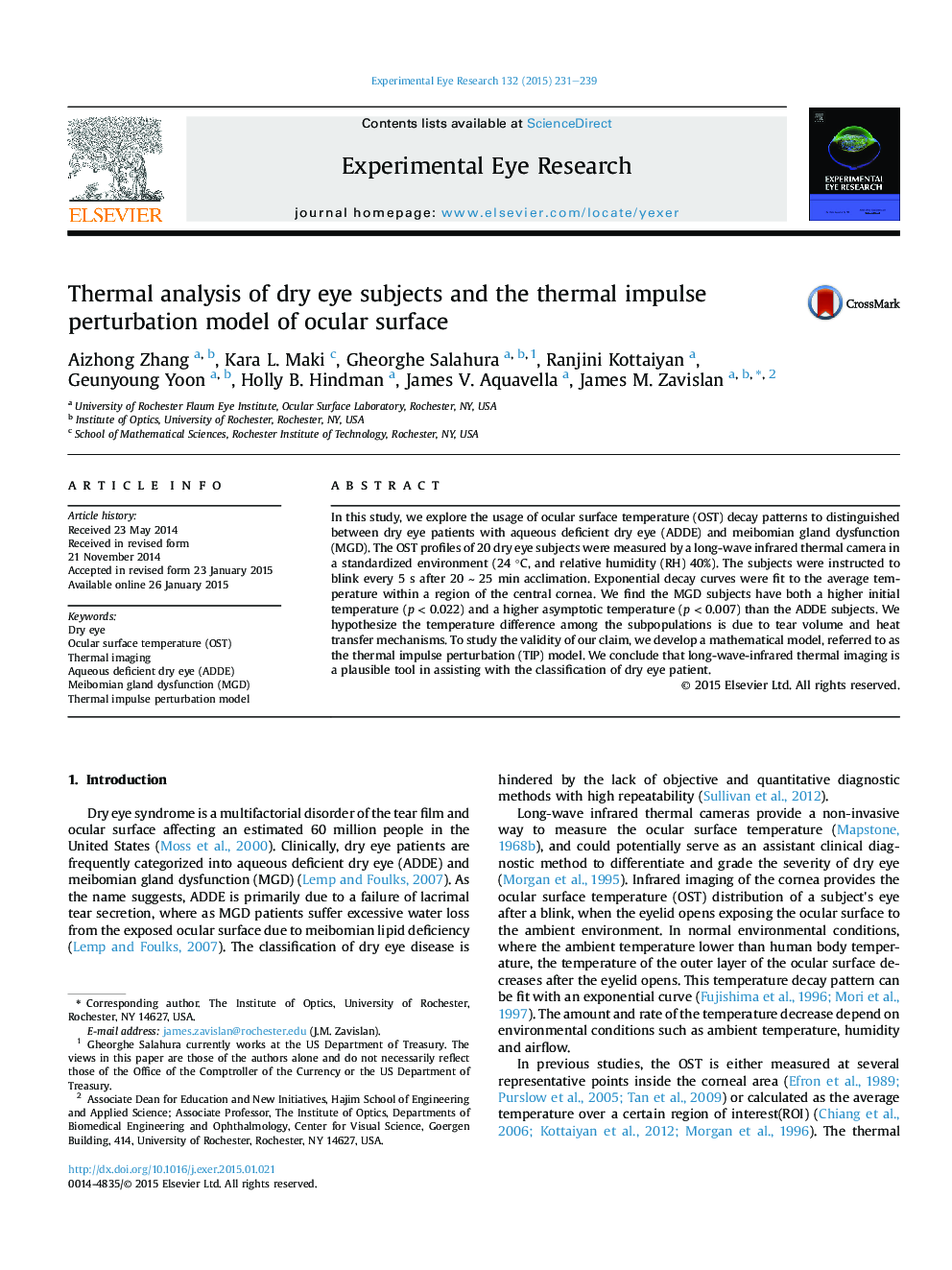| Article ID | Journal | Published Year | Pages | File Type |
|---|---|---|---|---|
| 6196645 | Experimental Eye Research | 2015 | 9 Pages |
â¢Thermal profiles of 5 ADDE and 15 MGD subjects in a standardized environment are compared.â¢We fit exponential functions to thermal profile data, and the function parameters were analyzed.â¢We find the MGD subjects have higher initial and asymptotic temperature than the ADDE subjects.â¢We propose a thermal impulse perturbation (TIP) model to illustrate warming by eyelids tears.
In this study, we explore the usage of ocular surface temperature (OST) decay patterns to distinguished between dry eye patients with aqueous deficient dry eye (ADDE) and meibomian gland dysfunction (MGD). The OST profiles of 20 dry eye subjects were measured by a long-wave infrared thermal camera in a standardized environment (24 °C, and relative humidity (RH) 40%). The subjects were instructed to blink every 5 s after 20 â¼Â 25 min acclimation. Exponential decay curves were fit to the average temperature within a region of the central cornea. We find the MGD subjects have both a higher initial temperature (p < 0.022) and a higher asymptotic temperature (p < 0.007) than the ADDE subjects. We hypothesize the temperature difference among the subpopulations is due to tear volume and heat transfer mechanisms. To study the validity of our claim, we develop a mathematical model, referred to as the thermal impulse perturbation (TIP) model. We conclude that long-wave-infrared thermal imaging is a plausible tool in assisting with the classification of dry eye patient.
